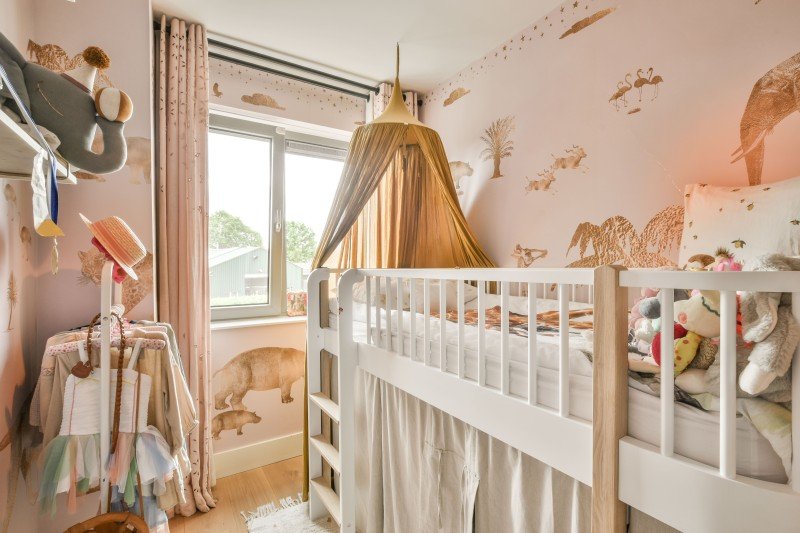Exploring Bunk Beds: A Comprehensive Guide
Bunk beds have actually long been a staple in children's bedrooms, dorm rooms, and even homes with minimal space. Not just do they supply a practical sleeping solution, but they likewise produce an enjoyable and creative environment for kids and a great space-saver for adults and households. This article will explore everything you require to understand about bunk beds, from types and materials to safety suggestions and buying guidance.
Tabulation
- Types of Bunk Beds
- Conventional Bunk Beds
- Loft Beds
- Triple Bunk Beds
- L-Shaped Bunk Beds
- Material Options
- Wood
- Metal
- Safety Considerations
- Buying Guide
- Frequently asked questions
Types of Bunk Beds
Bunk beds can be found in different styles to suit different needs and choices. Here's a breakdown of the most common types:
Conventional Bunk Beds
Conventional bunks generally include two beds stacked vertically on top of one another. These beds are perfect for siblings sharing a space or for taking full advantage of sleeping space in guest rooms.
Loft Beds
Loft beds stand likewise to standard bunk beds house beds however do not have a lower sleeping location. Instead, they often integrate a desk or seating area beneath, making them a great choice for little rooms needing multifunctionality.
Triple Bunk Beds
Triple bunk beds house beds are developed for 3 occupants, with beds stacked in a three-tier configuration. These are less typical but can be a fun option for big families or slumber parties.
L-Shaped Bunk Beds
With one bed positioned horizontally and the other vertically, L-shaped bunk beds sale beds are often equipped with additional features such as desks or storage drawers and can match corner spaces in a room.
Comparison of Bunk Bed Types
| Bed Type | Perfect Use | Description |
|---|---|---|
| Conventional | Shared bedrooms or guest spaces | 2 beds stacked vertically |
| Loft | Little spaces needing multi-purpose space | Upper bed with open space below |
| Triple | Big households or sleepovers | Three beds stacked vertically |
| L-Shaped | Corner or versatile spaces | A combination of vertical and horizontal beds |
Product Options
Bunk beds are produced from different materials, with wood and metal being the most common. Each material has its benefits and drawbacks.
Wood
- Durability: Generally robust and can hold up against years of use.
- Visual Appeal: Offers a timeless appearance that can blend with different designs.
- Weight Capacity: Typically stronger; can support heavier weights.
- Disadvantages: May be more expensive than metal alternatives and can be prone to scratches.
Metal
- Toughness: Generally lightweight and easy to move but still tough.
- Modern Design: Often comes in streamlined styles, making it appealing for modern spaces.
- Economical: Usually cheaper than wood alternatives.
- Downsides: Can be cold to the touch in winter seasons and might not have the very same visual appeal for some buyers.
Safety Considerations
When it pertains to bunk beds, safety can not be neglected. Here are crucial safety pointers to keep in mind:
- Guardrails: Ensure that the leading bunk has guardrails on both sides to prevent falls.
- Durable Construction: Check for a strong build and durable products to endure weight and motion.
- Weight Limit: Adhere to the manufacturer's weight limitation for both the upper and lower bunks.
- Ladder Design: Choose bunks with a safe, easy-to-climb ladder and prevent any sharp edges or rungs.
- Age Restrictions: Most makers suggest that kids under the age of six ought to not oversleep the upper bunk.
Purchasing Guide
When looking for bunk beds, consider the following factors to find the best suitable for your requirements:
- Space Availability: Measure the space size and ceiling height, making sure there is adequate space for the leading bunk.
- Bed Size: Decide in between twin, complete, or larger sizes based on your needs and the size of the space.
- Style Preference: Consider the total decoration of the bedroom to find an ideal design.
- Alleviate of Setup: Look for a bunk bed that is straightforward to assemble.
- Spending plan: Bunk beds can be found in different rate ranges, so figure out a budget plan before starting your search.
FAQs
1. What is the advised age for kids to sleep on the leading bunk?
Children aged six and older are typically suggested to sleep on the top bunk to minimize the danger of falls.
2. How can I make my bunk bed more secure?
To improve safety, ensure guardrails are appropriately set up and examine that the bed is placed on a flat surface area. Furthermore, encourage kids to utilize the ladder carefully.
3. Can I convert a bunk bed into 2 different beds?
Lots of bunk beds are designed to be convertible. Examine the manufacturer's requirements for convertibility features.
4. What devices are offered for bunk beds?
Typical devices consist of bed linens, storage drawers, staircases instead of ladders, and tented canopies for a fun visual appeal.
5. How do I maintain my bunk bed?
Routine look for loose screws or structural integrity can help ensure security. Dust the bed routinely and tidy spills promptly to keep the products in good condition.
Bunk beds are flexible and a space-efficient service for various living circumstances, from kids's rooms to visitor accommodations. With numerous designs and products offered, prospective buyers have a wealth of choices to consider, ensuring a combination of functionality and visual appeals. By prioritizing safety and following the tips laid out in this guide, people can discover the right bunk bed that fits their space and way of life, all while creating a pleasurable sleeping environment.








